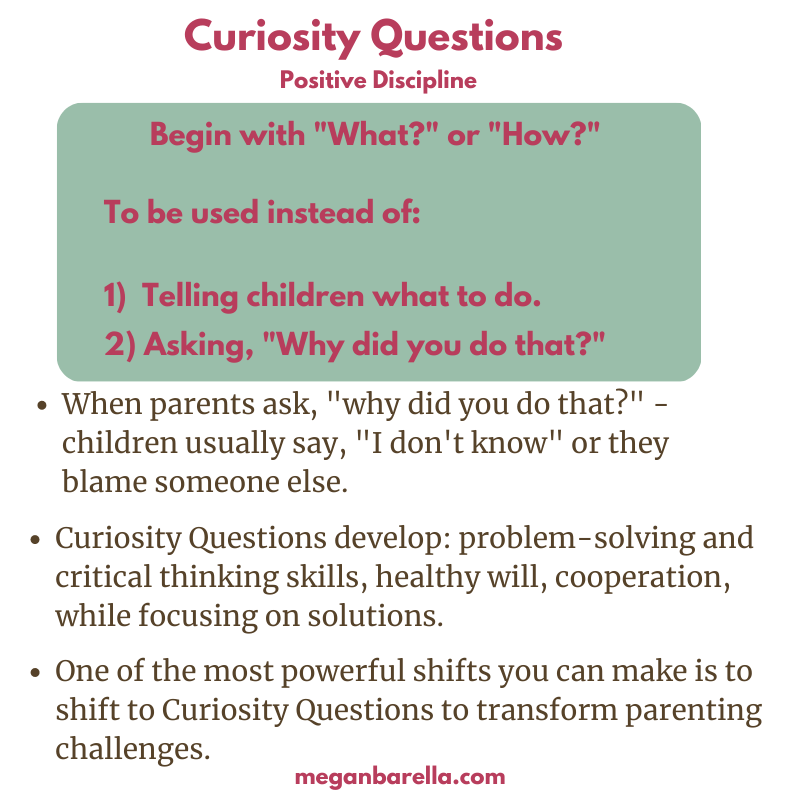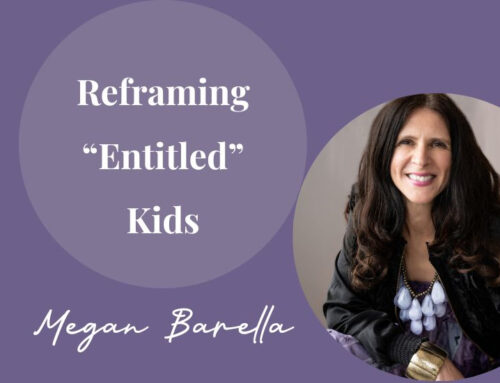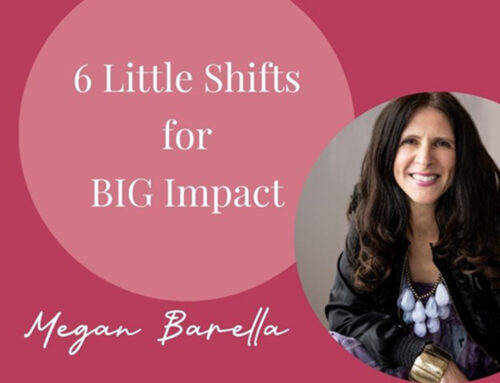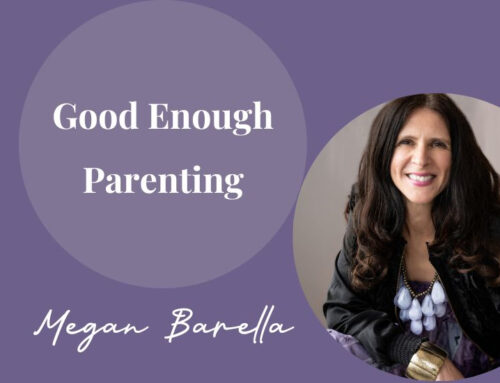| This is one of my favorite Positive Discipline tools.I use it DAILY in parenting.And Curiosity Questions have been a game-changer when I’ve worked with the most perplexing and challenging behavior in children.
Head over here, and join the conversation on Curiosity Questions in the Parenting for the Next Generation FB group community.
 Curiosity Questions Curiosity Questions 
Curiosity Questions are the tool!
 Starting with “what?” and “how?” – Curiosity Questions put ownership for positive behavior and life skills development back where they belong: in the hands of our children. Starting with “what?” and “how?” – Curiosity Questions put ownership for positive behavior and life skills development back where they belong: in the hands of our children.  ✨ “What happens next?”✨ “How’s it going?”✨ “What’s the plan?”✨ “How can you two work this out?”✨ “How can you figure this out on your own?”✨ “What can I help with?”➡️ How are you already using Curiosity Questions in your family?➡️ Or how could you use this tool?Reply to this email and let me know and drop a comment here.I’ll be happy to offer some individualized support.
This is a huge one, parents.It’s way too easy to get swirled into our children’s behavior,and engage in reactive power strugglesthat rarely, if ever have a positive outcome. Here’s what Positive Discipline says you can do instead:
1) Plan what you will do and notify your children in advance. (Kindly without any meanness, but in a way so your children know you’re going to stand by what you’re saying because it’s in the best interest of the family.)For example:“I will help with homework right after school or right after dinner, but not at the the last minute.”“When the toys are put away, then we’ll leave for the park.”2) Follow through on your plan with kindness and firmness.The magic is in giving it a try to develop the positive pattern, and work forward from there.My 2 cents on using this tool:✨ Accept that tears, upset, and resistance may be part of the process. So, plan to use this tool when you have the time and energy to be neutral, present, and affirm hard emotions and the positive boundary without getting all reactive.✨ When (and only when) everyone is calm, you can talk about what everyone could do differently next time. Your child may want to ask for the way they want to be reminded. You may want to set a limit on how many times you’ll remind. This is time to talk it in a respectful, kind, “we’re all this together” sort of way. Because you are in this together! Think coaching session or inspiring business meeting. Listen, share, and develop a plan that works best for your fam.✨ The point in using this tool is to step proudly into your leadership role, and do what you need to do in the best interest of the family– without threatening or bribing and without engaging in those nasty power struggles. Find your middle ground that isn’t giving in nor is it becoming dictatorial.✨ Waiting is often the name of the game. You may need to use this tool a few times to create a new pattern for your children, and testing may be part of the process. It’s like your children are waiting for you to threaten, yell, bribe and then give in. So don’t threaten yell, bribe, or give in. Be strong in what you have decided. Wait patiently, as needed. The goal is to have your children join in to your calm + confident lead. You got this, and we’re supporting you ever step of the way.
|

|







Leave A Comment
You must be logged in to post a comment.